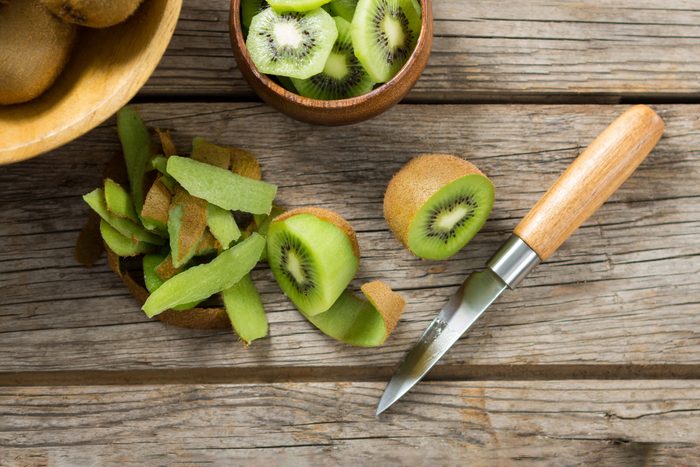Kiwis Decoded: What Do Kiwis Taste Like and Just How to Enjoy Them
Wiki Article
Checking Out the Special Characteristics and Remarkable Biology of Kiwi: A Comprehensive Research
Welcome to the interesting world of kiwi! In this comprehensive research, we will take you on a journey to discover the distinct characteristics and biology of these intriguing birds. From their physical attributes to their feeding practices and reproductive actions, we will certainly delve right into every aspect of their lives. Prepare to be astonished as we discover how kiwis have actually adapted to their flightless presence and discover their eco-friendly significance. Prepare to dive deep right into the captivating globe of kiwi!Physical Characteristics
What are the physical features of a kiwi bird? Well, let's dive right in! The kiwi bird is a tiny, flightless bird native to New Zealand. It determines concerning 12 to 14 inches in height and evaluates around 2 to 7 pounds. Among the most distinguishing characteristics of the kiwi bird is its long, slender expense. This costs is not only utilized for feeding, yet also for digging burrows in the ground.The kiwi bird has a special tuft, with soft, hair-like plumes that appear like hair. These plumes are grey or normally brown in color, assisting the bird assimilate with its forested environment. Unlike the majority of birds, the kiwi has little wings that are concealed under its plumes and are not practical for flying. Instead, it counts on its solid legs and effective claws for mobility.
Another intriguing physical quality of the kiwi bird is its nostrils situated at the suggestion of its bill. This adjustment enables them to seek bugs and worms, their key resource of food, in the leaf litter on the woodland floor (what do kiwis taste like). In addition, the kiwi bird has huge, round eyes that are adapted for low-light problems, as they are mostly nocturnal
Feeding Practices
To comprehend the feeding practices of the kiwi bird, you require to observe its foraging actions and dietary choices. Kiwis are special in their feeding behaviors, as they are mostly nocturnal and rely greatly on their sense of scent to find food. They have a long, slender costs that enables them to probe the ground looking for pests, worms, and various other invertebrates. These birds use their solid feeling of scent to identify victim concealed under the surface, and after that use their costs to remove it.In enhancement to insects, kiwis additionally consume fruits, berries, and seeds. Kiwis have been observed feeding on a wide range of plant species, suggesting their flexibility to different food resources.
Surprisingly, kiwis do not have a plant, which is a specialized part of the digestion system found in many birds. Instead, their food passes straight from the esophagus to the stomach. This may be a result of their unique transformative history and eco-friendly specific niche.
Reproduction and Reproduction
Now let's dig into the fascinating globe of kiwi recreation and reproduction, building upon our previous exploration of their unique feeding behaviors. They are monogamous birds, indicating they Full Report develop long-lasting pairs.Breeding period for kiwis usually happens between June and March. During this time, the women kiwi will certainly lay one to two eggs, which are unusually big contrasted to the bird's body size. In fact, kiwi look at here eggs are the biggest of any type of bird in proportion to body weight. After the eggs are laid, both the man and women take turns incubating the eggs, with each taking changes that can last as much as 12 days.
When the chicks hatch, they are birthed able and totally feathered to see (what do kiwis taste like). They are also fairly precocious, suggesting they are able to care for themselves relatively swiftly. Also after the chicks have hatched out, the parents proceed to offer treatment and protection for them up until they are fully independent, which can take numerous months.

Adjustments to Flightless Presence
Throughout their transformative history, kiwis have developed amazing adjustments for their flightless presence. As a flightless bird, the kiwi has actually undergone a number of changes to its composition and habits that enable it to prosper in its special setting. Among the most noticeable adaptations is its wing structure. Unlike other birds, kiwis have tiny, vestigial wings that are practically worthless for flying. Instead, these wings have developed into powerful appendages that aid in balance and stability, making it possible for the kiwi to browse its woodland flooring environment easily.Another adjustment that kiwis have actually created is their solid legs and feet. The kiwi's legs are muscular and located far back on its body, giving it with a low center of gravity and optimum balance.
In order to survive without the ability to fly, kiwis have actually also established a keen feeling of odor. Their lengthy, slim beaks residence highly delicate nostrils, enabling them to discover insects and worms underneath the forest floor. This remarkable adjustment helps kiwis situate food sources and keep a balanced diet plan.
Ecological Importance
The eco-friendly importance of kiwi depends on their function as essential seed dispersers in their indigenous habitat. As they relocate via the forest flooring, kiwi forage for insects, worms, and a selection of plants. In the process, they take This Site in berries and fruits, which include seeds. These seeds after that go through the kiwi's digestion system unhurt and are later on spread through their feces. This special procedure aids in the natural regrowth of forests.The kiwi's capability to distribute seeds is important for keeping the biodiversity and equilibrium of their environment. By spreading seeds throughout different areas, they add to the growth and abundance of different plant species. Subsequently, these plants give food and shelter for other pets, developing an internet of interdependencies within the ecosystem.
Moreover, kiwi play a vital duty in managing the population of specific plant varieties (what do kiwis taste like). Some plants create an excessive variety of seeds, which can lead to overcrowding and limited resources for other plants. By consuming and dispersing these seeds, kiwi aid manage the growth of such plants, making certain a much healthier and extra varied ecosystem
The ecological value of kiwi prolongs beyond their role as seed dispersers. Their burrowing behavior also contributes to dirt oygenation and nutrient recycling, boosting the general health and wellness of the forest floor. In addition, their feeding behaviors can assist control insect populations, reducing the threat of bug break outs that might damage plant life.
Verdict
Finally, checking out the distinct qualities and fascinating biology of kiwi discloses its physical attributes, feeding habits, recreation and breeding patterns, along with its adaptations to a flightless presence. With its unique features and eco-friendly value, the kiwi acts as a remarkable instance of nature's diversity and adjustment. By comprehending and valuing the kiwi's function in its ecosystem, we can additionally promote conservation initiatives to ensure the conservation of this amazing varieties for future generations.
Report this wiki page